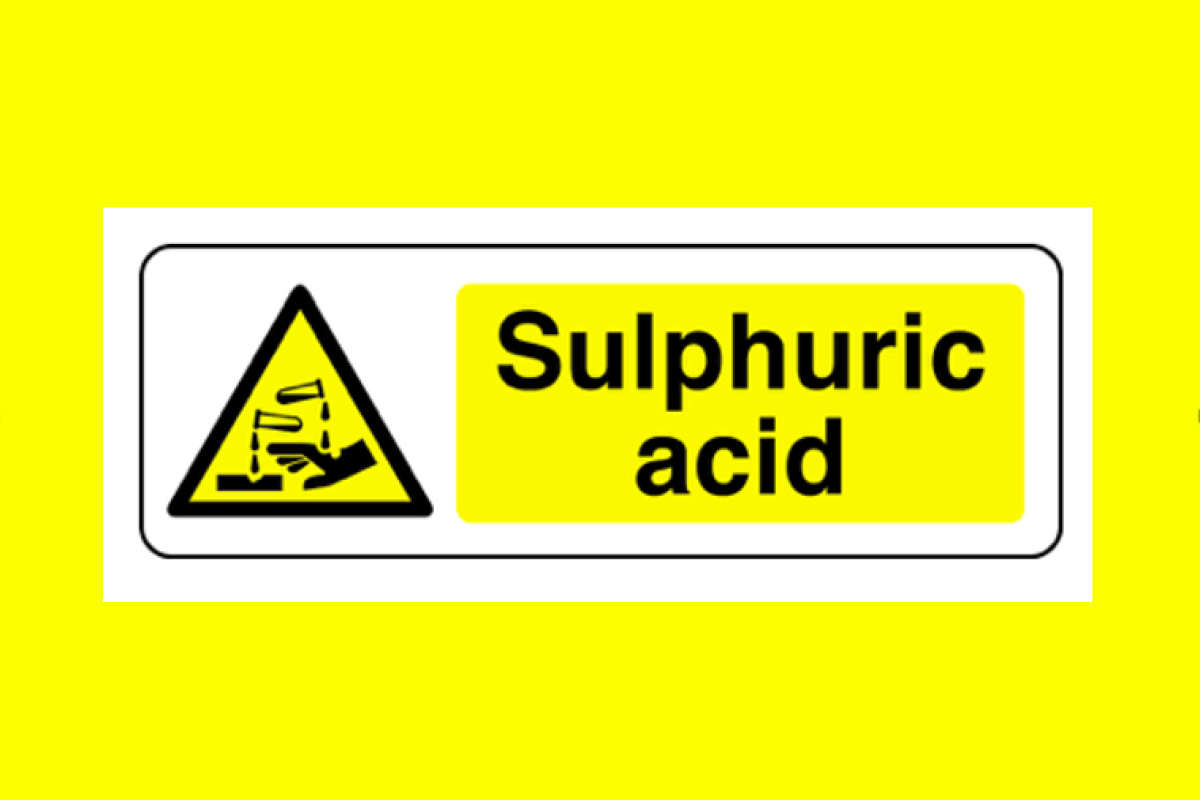Sulphuric Acid

Effective First Aid Management
Diphex are passionate about preventing serious chemical harm.
This is the first in a series of posts about commonly used chemicals and how to best manage first aid.
Sulphuric Acid is used in many manufacturing processes including the production of fertilisers, in the pharmaceutical industry, in paper bleaching processes, in the water treatment industry and for surface engineering. Sulphuric acid is present in your car battery and is often used as a drain cleaner in the home. Sulphuric Acid,chemical formula H2SO4 is widely used in industry with over 260 million tonnes being produced each year. Sulphuric is also known as Sulphur Trioxide in its solid form, Oleum in its anhydrous form and colloquially as Oil of Vitriol, Vitriolic Acid and battery acid.
Sulphuric Acid is highly corrosive in its concentrated forms. Due to its ability to release two H+ ions successively when in aqueous solution the corrosive potential of a Molar solution is doubled. Sulphuric Acid has four mechanisms of corrosivity:
- The production of H+ ions
- Dehydration caused by the concentrated solution
- Exothermy
- The oxidising nature of the concentrated solution
When concentrated Sulphuric Acid comes into contact with the skin or eyes there is immediate pain. Contact will result in coagulation-induced necrosis. With eyes, the cornea will become opaque and the risk of ocular perforation is significant.
Effective First Aid
Concentrated Sulphuric is very corrosive and penetrates into the tissues of skin and eyes extremely quickly. If the first aid response is water this must commence immediately with copious quantities. The standards within EN15154 state 60 litres per minute for 15 minutes. This volume of water will provide mechanical washing and dilution in a bid to remove as much chemical as possible and to dilute the chemical quickly to reduce the penetration.
Large volumes of water will also help to contain the heat evolution. We must however be conscious of the spread of the contamination to unaffected parts of the body, the limited effect surface washing can have on penetrated chemical and the osmotic effect of water assisting chemical penetration.
The use of Diphoterine®, which is an amphoteric chelating agent, as the washing solution provides benefits over the use of water. The Diphoterine® solution still provides a mechanical washing effect with the benefit of a rapid return to a safe physiological pH as the Diphoterine® molecules attracts, binds and renders harmless the corrosive H+ ions.
In addition, the hypertonic Diphoterine® solution limits the penetration of the chemical and can draw any penetrated chemical out of the tissue. The resultant run off from decontamination is non-corrosive and the rapid suppression of the aggression of the chemical provides a safer and more comfortable decontamination process.
